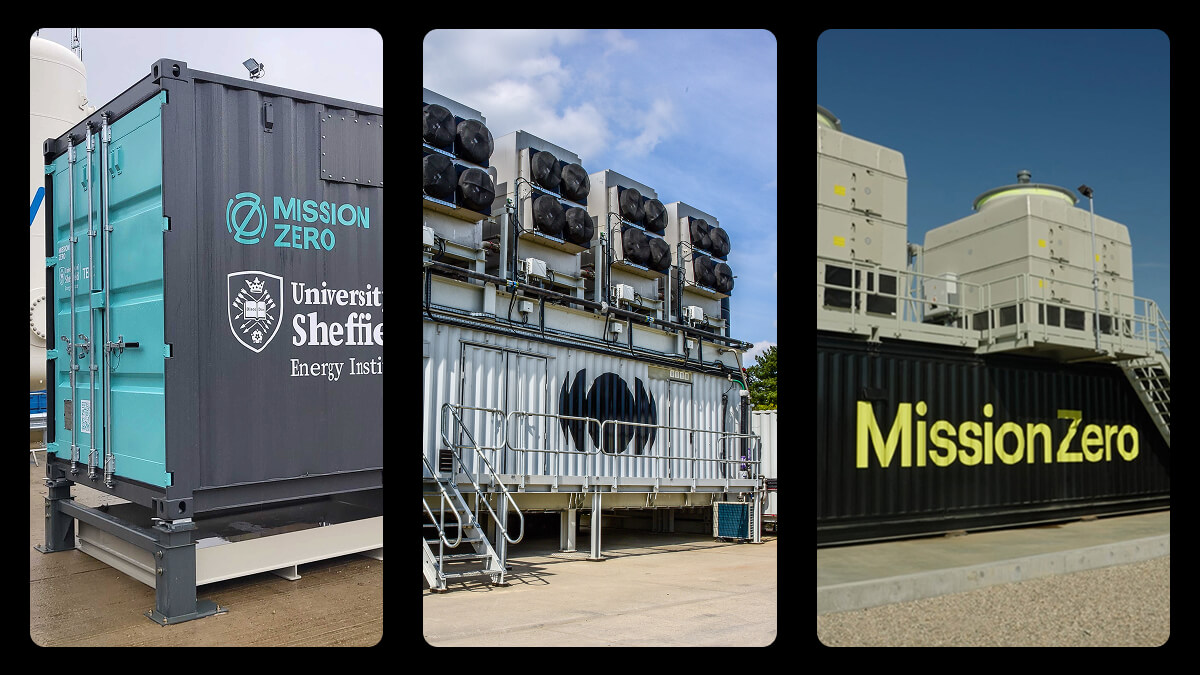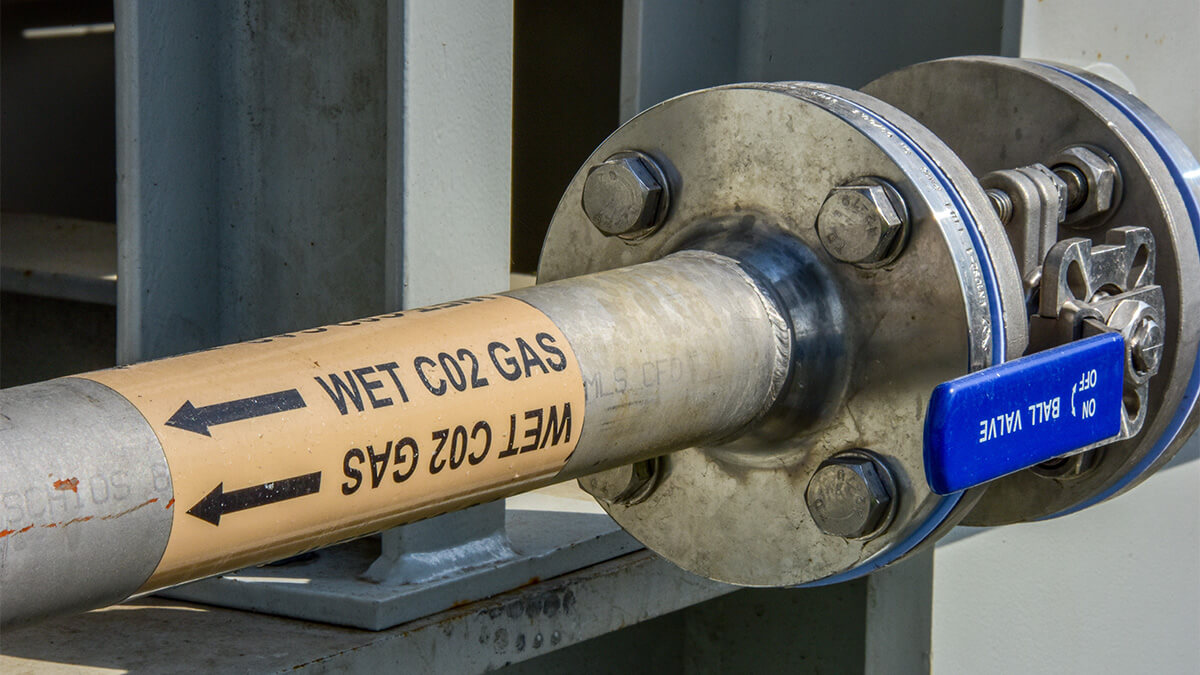Carbon capture and storage (CCS) — sometimes referred to as point-source carbon capture or just ‘carbon capture’ — and direct air capture (DAC) are often grouped together in discussions about climate technology, used interchangeably as synonym solutions and treated as shorthand for the same thing.
Yet, carbon capture and DAC are fundamentally different technologies, serving very different purposes and delivering vastly different climate impacts. It is crucial that policymakers, industry leaders, investors, and environmental press thoroughly understand these distinctions to ensure that early misconceptions don’t hinder the progress of developing critical climate mitigation solutions.
To that end, here’s a breakdown of direct air capture vs carbon capture — explaining what each technology does and the distinct roles they play in helping to deliver the world’s climate goals.
Common DAC vs carbon capture misconceptions
Carbon capture and storage technology has been kicking around for quite a while, and has already established a firm conceptual foothold among the climate mitigation community — often evoking a strong response. The world’s first carbon capture and storage project was built more than 50 years ago, driven by economics rather than environmental concerns, and its technological development since has been chequered by huge underdelivery in proposed projects and sharp public criticism for its reliance on industrial emissions.
In contrast, direct air capture technology has only started to develop in earnest within the last decade, with the first commercial DAC project emerging in 2017 and the UK’s first DAC plant hitting the ground in 2023. It is a brand new negative emissions technology that is only just starting to scale.

Whilst both carbon capture and DAC pull carbon from the air, they address fundamentally different issues related to humankind’s production of planet-warming carbon dioxide (CO₂). CCS technology captures CO₂ directly at a new emissions source — integrated on the chimneys of, for example, cement and steel manufacturing plants to prevent new CO₂ from the combustion of fossil sources from entering the atmosphere. This makes carbon capture and storage a carbon-neutral emissions solution, as the amount of CO₂ in the atmosphere remains the same.
DAC, on the other hand, works completely independently of new fossil carbon emissions and instead tackles historic ones. It can be located anywhere in the world to directly remove CO₂ that is already in the atmosphere — tackling legacy industrial emissions that have accumulated over centuries. When paired with permanent storage, direct air capture offers a carbon-negative emissions solution, as the amount of CO₂ in the atmosphere decreases.

Due to its links to heavy industry and, therefore, fossil fuel dependency, carbon capture has faced public opposition, especially when the resulting CO₂ is used for enhanced oil recovery (EOR). According to the Carbon Tracker Initiative, almost 80% of the CO₂ captured through CCS today is used for EOR. As a result, critics argue that carbon capture is delaying the exploration of alternative solutions to fossil fuel dependency.
Whilst carbon capture technology has existed for decades, its uptake has been limited, with minimal evidence to suggest meaningful climate impact. In contrast, direct air capture may still be a relatively new technology, yet its credentials have seen global deployments boom over recent years to validate its benefits as a promising carbon removal tool ready for rapid scale-up.
Direct air capture vs carbon capture key differences
It’s important to understand that while DAC and carbon capture technologies are often conflated, their applications and design vary greatly from one another. Here’s a high-level summary of the main points of difference between these climate mitigation technologies.
What makes DAC distinctive to carbon capture?
- DAC eliminates historic emissions: Unlike carbon capture, which addresses new carbon emissions, DAC removes legacy CO₂ from the atmosphere — directly cleaning up the accumulation of atmospheric CO₂ that is largely responsible for our current climate crisis.
- Scalable global deployment: modular DAC can be mass deployed virtually anywhere independent of emissions sources, making it a flexible and scalable negative emissions solution. CCS, in contrast, is a solution that is designed bespoke for a specific industrial emissions source.
- Carbon negative: When paired with a removal solution, DAC doesn’t just neutralise emissions — it achieves a net removal of CO₂. This removal doesn’t just have to mean underground storage either; the UK’s second DAC plant in Norfolk is locking atmospheric CO₂ into carbon-negative building materials to enable urban carbon sinks.
- Powered by renewables: DAC can run entirely off renewable power, producing a stream of CO₂ with an incredibly low carbon footprint, whereas the CO₂ from carbon capture has a higher embodied carbon content.
- Pure CO₂ output: The CO₂ recovered from ambient air by direct air capture has a much higher purity, unlike point-source CO₂ which is heavily contaminated with other industrial gasses. This expands the application of CO₂ produced by DAC vs CCS.
Versatility beyond storage: Our work alongside the University of Sheffield is pioneering an industrially scalable fuel with the lowest carbon footprint of any SAF – all thanks to DAC’s low carbon intensity CO₂.
What DAC can learn from CCS
Looking back at the challenges carbon capture technology has faced over recent decades, DAC developers are presented with a learning opportunity. The Energy Transition Commission reports that the current pace of development of carbon capture and storage is far short of what is required for meaningful climate impact. This stems from confusion around how and why CCS is deployed, inadequate investment, and controversies which have generated public opposition.
Through championing transparency, innovation, and real-world deployment alongside renewable energy, DAC can avoid the pitfalls that have hindered the progress of carbon capture and storage. Direct air capture represents a transformative opportunity to not just mitigate, but reverse, the effects of climate change.
Using every tool in our mitigation toolkit
To reach our climate goals, we need to use every climate solution at our disposal — new and established, short- and long-term, cheap and expensive — adopting a balanced portfolio approach to spread risk instead of picking individual winners.
Using both carbon-neutral (CCS) and carbon-negative (DAC) technologies to reduce humanity’s CO₂ emissions can only be a positive thing. Whilst in an ideal scenario we would put a stopper on the world’s new carbon emissions, carbon capture and storage exists as a bridge solution for decarbonising heavy industry. While DAC is a younger and, therefore, more expensive technology to develop, it provides a scalable approach to reducing the amount of CO₂ in our atmosphere, and offers a much longer-term role in fighting the climate crisis.
Of course, to deliver that potential, careful moderation is required to ensure captured carbon is stored permanently and not used to prolong fossil fuel extraction — and to ensure energy companies don’t let investment in these solutions detract from broader decarbonisation efforts. Thoughtful policy, regulation, and investment are central here.
Ultimately, decarbonisation investment should be about creating the carbon economy of the future — not keeping the status quo and locking society into long-term reliance on fossil fuels. We cannot risk essential climate investment being used as an excuse for the energy sector to delay the adoption of available decarbonisation technologies, despite the challenges they may present. We risk the latter if investment and policy focuses on singular solutions that do not force our industry and economy to evolve for the better
Understanding the nuances of direct air capture vs carbon capture isn’t just semantics — it’s essential for shaping the right climate strategies. Both technologies have roles to play, but only by recognising their differences can we deploy them to their full potential.






